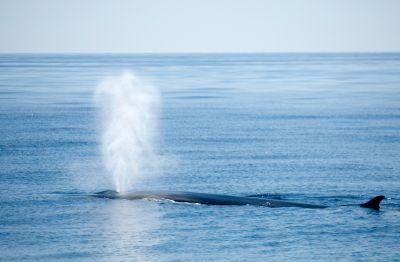Originally posted February 2010
Known as the Oregon coast’s whale-watching capital, the tiny seaside village of Depoe Bay sits on Highway 101 on a rocky harbor carved from lava rock. When the waves hit the lava tubes, little seawater geysers, called “spouting horns” occur.
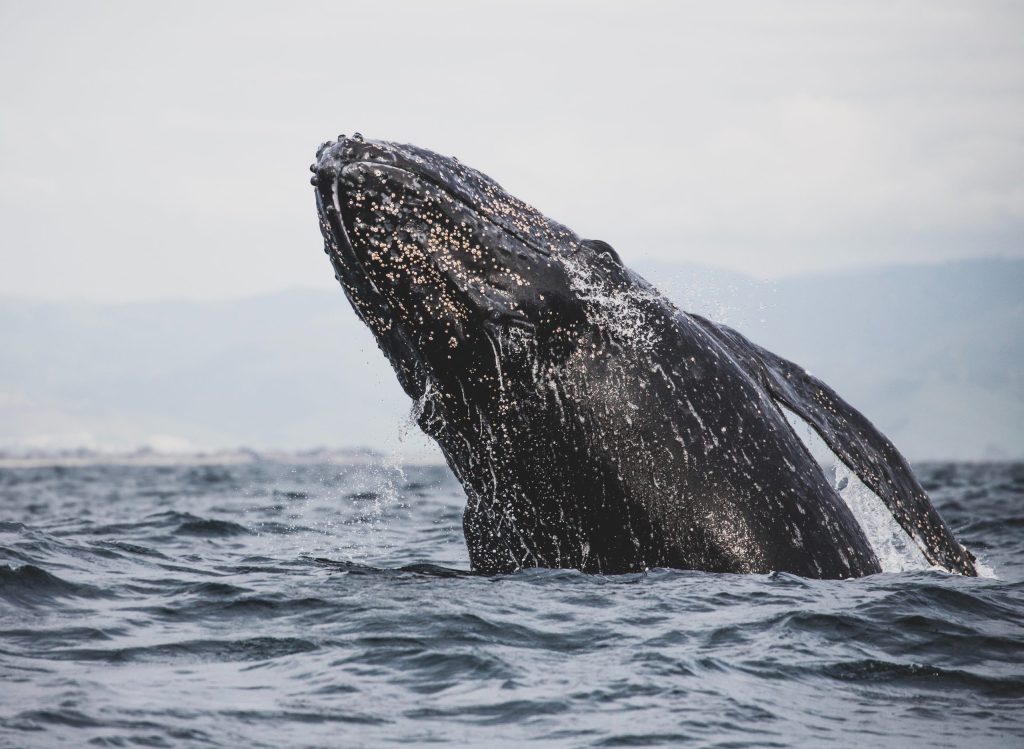
A gray whale breaching. Photo: Andre Estevez (Pexels)
If the rain hadn’t been so blustery, Ken and I would have enjoyed walking the promenade along the seawall of Depoe Bay’s harbor, but that wasn’t to be. Still, we made the best of our trip and found a lot to love about this area despite the foul weather. (And there are plenty of sunny days, of course, but not during our early January trip.)
I couldn’t believe that the period from Christmas to January 6 is the year’s peak whale migration season, but at this time, gray whales are making their way south to Baja (in Mexico) where they calve. As many as 60 whales an hour pass by Depoe Bay during this time. Unfortunately, Ken and I never spotted any from the shore because of the stormy weather and gray skies.
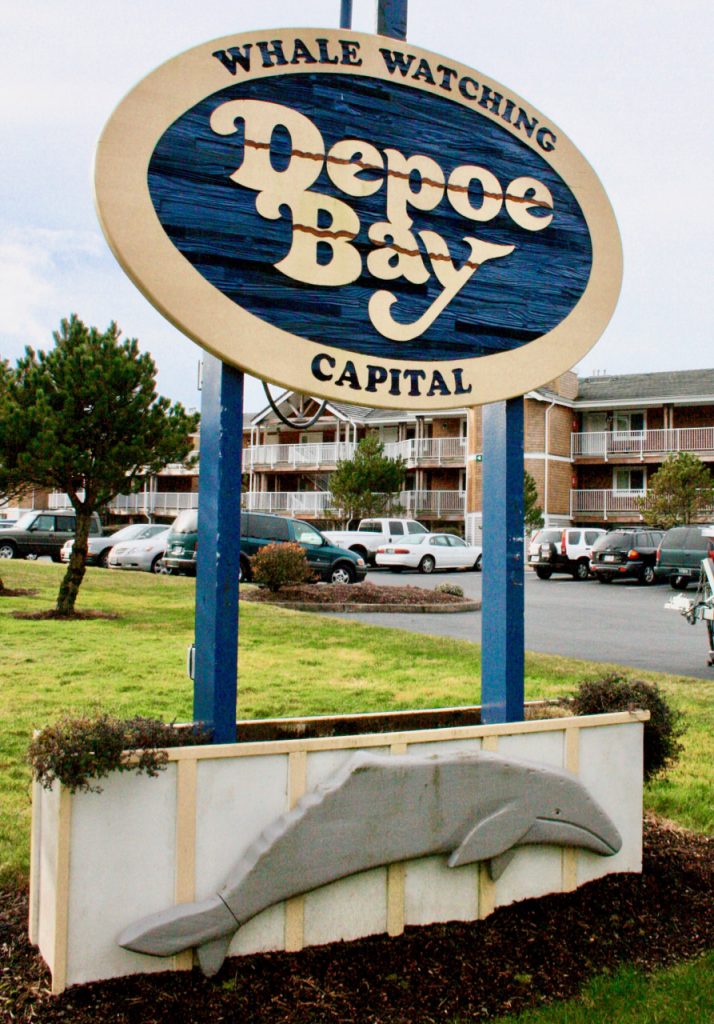
Depoe Bay, Oregon ©Laurel Kallenbach
The town of Depoe Bay is pretty small: it’s a quaint collection of shops, galleries and restaurants right on the harbor.
The low clouds obscured the ocean views during our visit, but we heard stories of people eating breakfast in a restaurant and spotting whale spouts from their table.
That didn’t happen for us, but we still enjoyed getting out of the rain and warming ourselves with world-famous clam chowder at Gracie’s Sea Hag, a nautical-themed restaurant.
We also popped into several of the town’s shops, which sell various crafts, ocean-themed art, and plenty of souvenirs of all types. (And yes, they do sell umbrellas!)
Even if you don’t spot whales, you can learn a lot about them at the Whale Watching Center, overlooking Depoe Bay’s harbor. Run by the Oregon Parks and Recreation Department, the Whale Watching Center has films, museum displays, and information for both kids and adults. The park rangers answer your questions and help you spot whales.
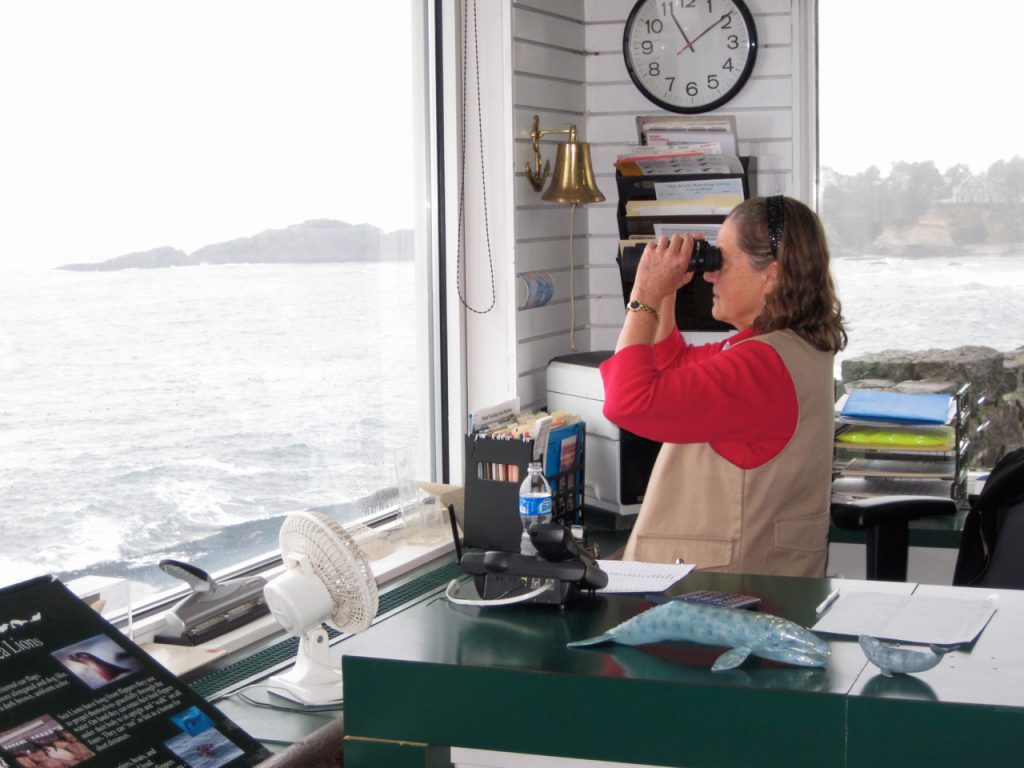
At the Depoe Bay Whale Watching Center, this expert pointed out whale spouts in the mist of the bay. ©Laurel Kallenbach
The Center also provides maps of the prime lookout points for whales, and if you happen to visit during winter or spring Whale Watch Weeks (December and March), you’ll encounter experienced volunteers who are posted at these scenic overlooks and can point you in the right direction.
In summer, a pod of whales hangs out in and around Depoe Bay where these baleen feeders vacuum up ton after ton of mysids (super-tiny shrimplike organisms). So, visiting the area is good at several times each year.
Thar She Blows!
I’d almost given up hope for seeing whales—although the experts at the Whale Watching Center assured us the gigantic ocean mammals were there—just too many miles out for us to see in the fog.
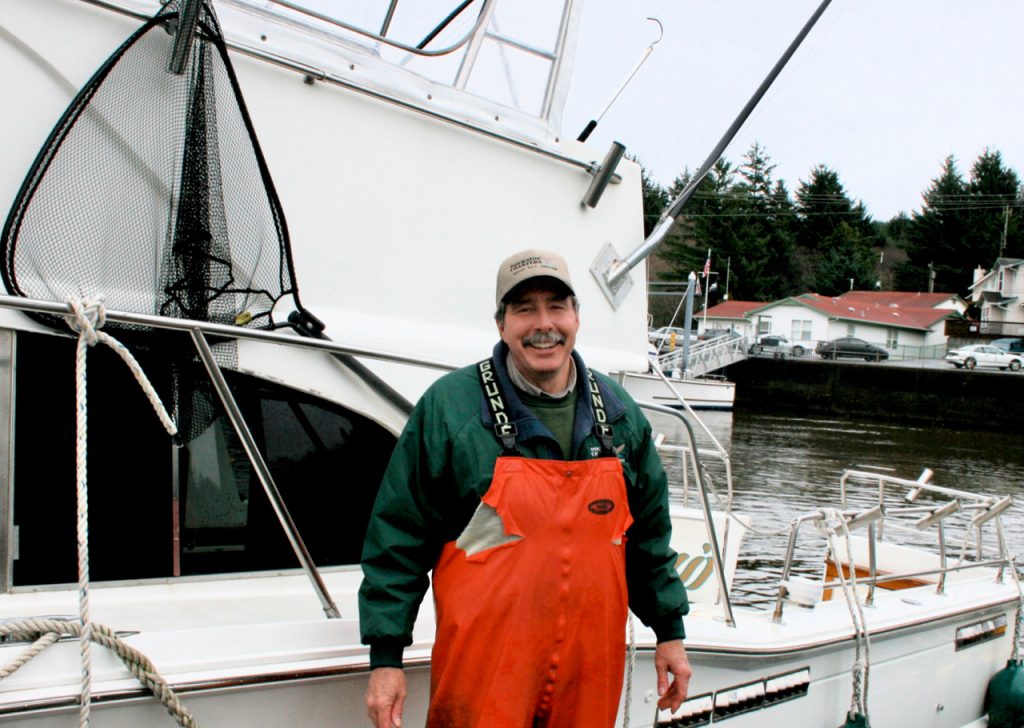
Captain Loren Goddard, with Dockside Charters, took us out on the high seas. ©Laurel Kallenbach
Fortunately, one day about noon, the sky cleared just enough that we convinced captain Loren Goddard, owner/operator of the charter vessel “Affair” to take us out seven miles. (We arranged this through Dockside Charter.)
Sure enough, the whales were there! We spotted the blows, like puffs of smoke, of about 10 whales—even seeing some ridged backs and tale flukes as the giants moved south. We exclaimed and cheered each time we found a new whale. Although we never got very close, it was a thrill seeing them.
In summer, Dockside runs whale-watch trips from 6-person Zodiac boats, which can give you a much closer look at the whales.
—Laurel Kallenbach, freelance writer and editor

